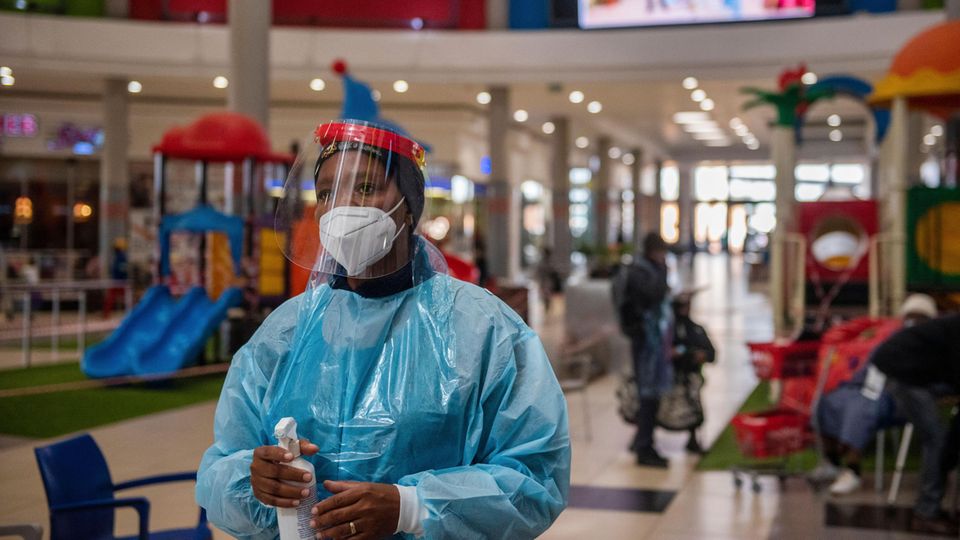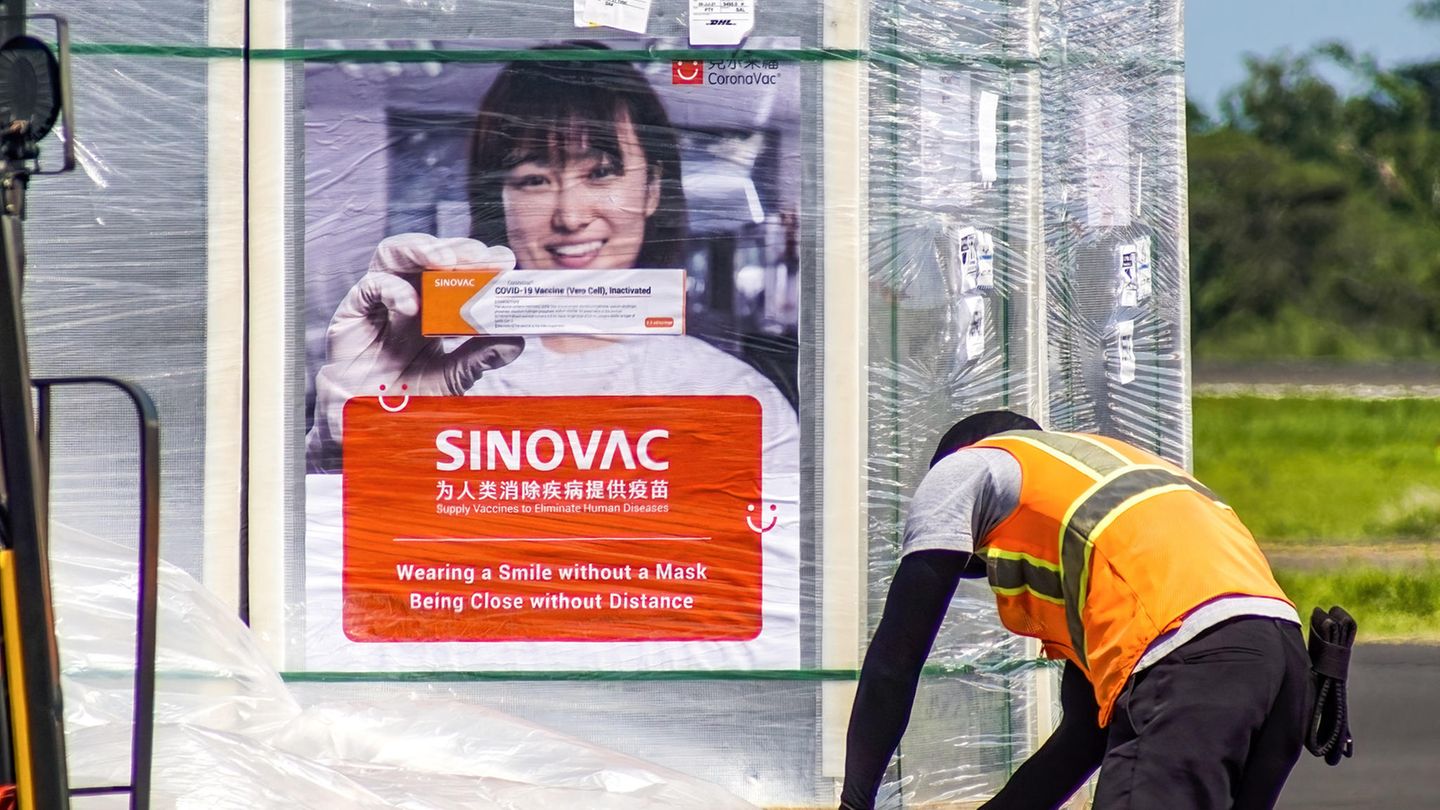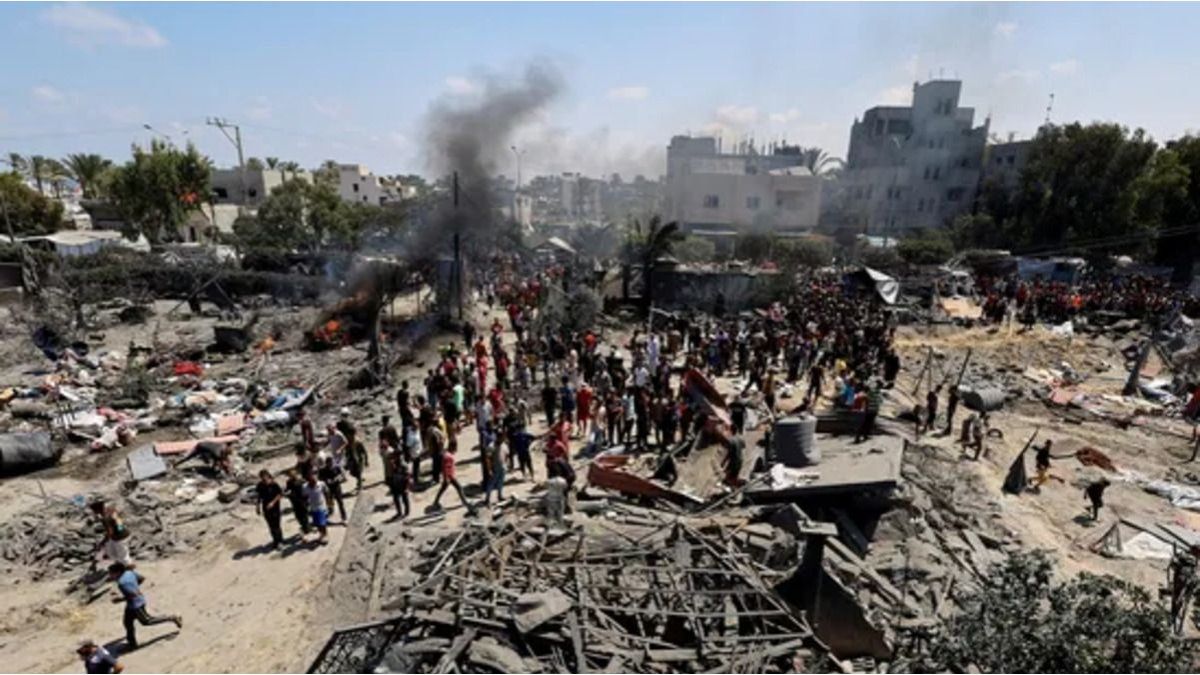China distributed its corona vaccine around the world. Poor countries in particular benefited. But now the vaccine is increasingly becoming a problem. The protective effect is likely to decrease rapidly within a short time.
When the first vaccines hit the market, countries of the world got their elbows open. The rich afforded themselves a decent piece of the pie, the poorer countries, if they got anything at all, had to be content with a few crumbs. Good food for China. The People’s Republic seized the opportunity, generously distributed its vaccine, exported and donated a lot. And acted as the savior of the poor. So far so good, if it weren’t for the problem with the growing doubts about the performance of the Chinese vaccine – because it probably only protects for a few months.
More than 1.1 billion Sinovac vaccine doses are said to have been produced, according to science data specialist Airfinity. That’s more than a third of all vaccine doses in the world. No other vaccine has been inoculated more often. But the West was skeptical from the start. The People’s Republic, so the criticism, wants to polish up its image and pursue strategic ulterior motives. This was quickly joined by critical voices about the vaccine’s effectiveness, even from China itself. In April, it was the head of the Chinese Center for Disease Control and Prevention, Gao Fu, who said that the Chinese vaccines “did not have a very high protection rate.” Later he rowed back, but the doubts remained.
From rescuer to problem case
It has long been known that the Chinese product – export hit or not – cannot keep up with other vaccines. The World Health Organization (WHO) certified Sinovac in June an effectiveness of 51 percent against symptomatic courses. For comparison: the two mRNA vaccines from Biontech / Pfizer and Moderna come to 95 percent, Astrazeneca to 80 percent and Johnson & Johnson to 65 percent.
But Sinovac could do something that other vaccines couldn’t: it was cheap and easy to get. A big plus, especially for poorer countries. Who, especially at the beginning, had little chance of getting the highly popular mRNA vaccines. Several countries, especially in Asia, Africa and South America, therefore made the Chinese vaccine the basis of their vaccination campaign. Now, however, what has long been feared seems to be hardening. The Chinese vaccine is causing problems and is probably not as effective as we had hoped. Even the manufacturer has to admit that. It is the antibodies that are worrying.
According to a study by the manufacturer, their number decreases rapidly within a few months, so much that it falls below the limit set by researchers in around two thirds of those examined. The results are supported by another study from Thailand. The researchers had found that after vaccination with the vaccine, the number of antibodies halved every 40 days. It remains unclear what this means for the protective effect. The manufacturer recommends a booster vaccination – or: the countries should buy even more vaccine.
Booster vaccinations instead of primary vaccinations
That could be a possibility. According to a study that has so far only been published in preprint and has not yet been assessed by independent experts, the third vaccination increases the number of antibodies considerably. However, that would also mean that many more vaccine doses would be needed than previously planned. In the poorer countries in particular, the vaccine is already in short supply. The decision to have a third injection would therefore also be at the expense of initial vaccinations and would slow down vaccination progress.
But it doesn’t help. In some countries, trust in the Chinese vaccine has meanwhile been shaken to such an extent that, despite the slow progress in vaccination and the horribly high number of infections, people who have already been fully vaccinated are now being called for a refresher. However, Sinovac should be dispensed with. One of these countries is Indonesia. It is one of the main buyers of the vaccine. Only seven percent of the 270 million inhabitants have been completely immunized so far, most of them with the vaccine from China. 1.5 million, these are health workers, are now called again for the syringe. You should get a refresher with the moderna mRNA vaccine.
Thailand also needs to rethink. As in Indonesia, the vaccination rate is at a low level. A vaccine donation from the USA could have been a push. However, a third of the 1.5 million doses made by the manufacturer Biontech / Pfizer are not intended to be used for primary vaccinations, but rather also to be injected into the arms of health workers who have already been immunized. But that’s not all. The plan change also provides for a move away from the homogeneous vaccination scheme, with a dose of Astrazeneca being vaccinated for the Sinovac first vaccination.

China just keeps going
And in Malaysia they don’t want to hear anything about the Chinese vaccine anymore. Doses that are still in stock are supposed to be used up, but then the country wants to switch to the vaccine from Biontech / Pfizer. Even in China, the unrest is growing. The news portal Caixin reports that they are also thinking about booster vaccination with the Biontech / Pfizer vaccine. Details are not known. There is also silence about how things should continue and whether and if so what effects the latest developments around Sinovac will have.
Instead, China tries hard to limit the damage to its image and continues to act as the savior of the poor and has the corresponding figures for this. Because China is a leader when it comes to vaccine exports. “Making vaccines more accessible and affordable in developing countries is one of the most important tasks in the global fight against the pandemic. Faced with this problem, China was the first country to declare its willingness to help developing countries,” said Li Baodong, general secretary of the Boao Forum for Asia on Thursday when the institute presented report on Covid-19 vaccinations. At the same time, he criticizes: “According to the data, several countries have made many promises about vaccine delivery but done little.” On the other hand, not a word about the low protective effect of the export hit.




